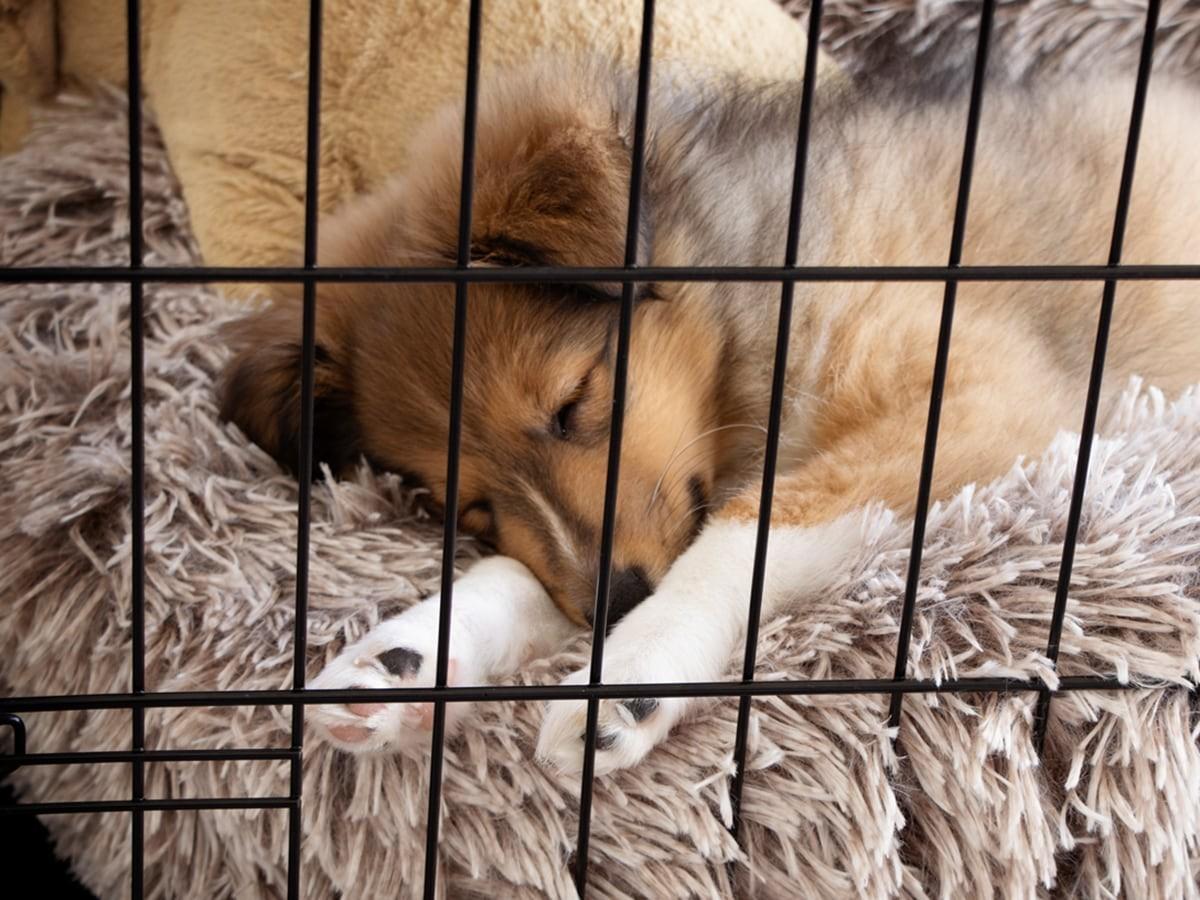Introduction
Thinking about crate training your puppy? Puppies have tons of energy and may feel impossible to properly monitor all the time, especially when you have a house with multiple rooms in which they can wander off.
Apart from having bathroom accidents in the house, puppies with free range of your home may also engage in destructive behaviors, like chewing up carpet or shoes. Crate training your puppy is extremely effective.
Crate training takes patience, time and lots of treats to accomplish. It is well worth your time and effort for the results it brings. In this article, you’ll learn more about the importance of crate training and some helpful tips for doing it right.
Why Crate Train a Puppy?
Puppies are naturally curious and mischievous. They look to you as their owner to set boundaries and teach them wrong from right. Without training, they may wander off and engage in all sorts of destructive behavior around the home!
Dogs are den animals. Your dog’s sense of security, peace of mind and general well-being need to provide an equivalent of a den within the home. (1) Dogs use their dens in the wild as places of refuge, to sleep or to eat.
A dog who does not have a ‘den’ to go to somewhere in your home is more likely to feel anxious or overstimulated. As a result, pooches may have accidents or destroy items. For a domesticated dog, a crate is a great den.
Crate training is a way to condition your puppy to behave non-destructively in the home. Dogs naturally go to great lengths to keep their den comfortable and clean. Crate training teaches dogs independence and responsibility before they are granted free access to the home.
Choosing the Right Crate
Ready to start crate training? The first step is to buy a crate! You might notice several options available at your local pet store. Let’s take a walk through some of the crate options you may encounter and decide which is right for you!
Material
Dog crates can be made of different materials. Dog crates usually come in three varieties:
Metal
Plastic
Fabric
Metal and plastic crates are both great options for young puppies. They are made of durable, hard-to-break material. They are also both non-porous making them extremely easy to wipe clean after an accident.
Puppies have sharp teeth and can be compelled to chew on just about anything. Fabric is soft and will rip easily as well as absorb liquids, like urine. It’s recommended to wait until the puppy is a bit older for a fabric crate.
Size
The size of your crate is possibly one of the most important aspects of choosing a crate. This type of training will be ineffective if you choose too large a crate. Why?
It goes back to dogs being den animals. If a crate is too large, your puppy may find they can easily go to the bathroom in one corner and still have room to sleep and eat in the opposite corner, away from their stool or urine.
Your crate should be just big enough for your dog to stand up, turn around and lie down in. Yet not so large that they can lie down and have extra room on either side. It should not be so small it can’t comfortably stand or lie down. This is uncomfortable for your dog and has the potential to cause joint problems.
You may need to buy new crates as your puppy grows. If you have a metal crate, you can purchase dividers that section off a small portion of a large crate. As the puppy grows, simply move the divider to make more room in small increments.
How to Crate Train Effectively
Now that you have chosen a crate, you are ready to start crate training. Crate training requires more work than just setting up the crate and hoping the puppy uses it, though. To crate train your puppy in an effective way, follow these tips!
Think About Placement
You should place the crate somewhere in your home with a comfortable temperature, away from direct sunlight or loud noises yet still close to where you and your family typically hang out.
For nighttime crate training, you should move the crate closer to where you sleep. Puppies need frequent bathroom breaks (even at night). Your puppy should be close enough to alert you when they need to go. If your puppy whines or cries in the crate when it needs to go – think of it as progress. You would rather they learn to alert you when they need to go outside than defecate in the crate or house!
Create a Positive Association with the Crate
Your puppy may be hesitant around a crate, especially if they are very young or come from an environment where a crate was never used. Remember to be patient!
Set up the crate and let your puppy check it out. Leave the door open on the crate with some fun toys and treats inside.
When they show curiosity around the crate, praise them. If they enter the crate on their own, praise them and offer them a high-value treat. Do not close the crate on them right away. Allow them to enter and exit freely for an hour or two or until they feel more comfortable with the crate.
After they have shown interest and seem comfortable entering and exiting the crate, offer them their daily meal in the crate. Putting their food bowl in the crate allows them to create a positive association with the crate.
Gradually Increase Time in the Crate
Don’t leave your puppy in its crate for three hours straight right off the bat. Slowly introduce the concept of being enclosed and alone to your puppy.
To start, offer your puppy their meal or treat in the crate, and then close the door after they have entered. Praise them and sit with them for five to 10 minutes. Then, leave the room the crate is in but stay close enough to listen.
Your dog may cry or whine when it realizes it has been left alone. Do not show your puppy attention (positive or negative) when it cries inside the crate. Wait until there is a pause in the crying or whining. Only after the dog is quiet, release them from the crate and praise them.
After you’ve done it successfully for 10–15 minutes, try crating them for 30 minutes, then an hour, and so on. Rewarding them each time and only releasing them after they display calm and quiet behavior helps enforce crate positivity.
Crate Your Puppy – Even If You Are Home
A lot of people make the mistake of only crating their puppy when they know they will go out of the house for a period. If you do this, you accidentally may teach your puppy that going in the crate means they will be alone. This may create a negative association. You should crate your puppy for one to three hours a day when you are home and present. It will teach them that just because they’re in the crate doesn’t mean they need to be scared.
Make a Consistent Potty Break Routine
Puppies need potty breaks quite frequently. Leaving your puppy crated without a consistent potty break schedule might make them anxious. The ideal cadence to take a puppy outside for a potty break is every two to three hours. After your dog shows they can hold their bladder more (i.e., they are not going potty on every break), you can slowly increase the timing to every four to five hours.
This is most important at night. The best thing you can do is set an alarm for every three hours. Keep your puppy’s crate nearby and take your puppy out on every alarm. You should avoid relying on your puppy crying to wake you up – your dog might not always whine. You might not always wake up to it.
In Conclusion
Training your puppy is stressful, but it’s very important. Crate training takes patience, understanding and consistency. By following the steps we’ve laid out here, you will be off to a great start in effectively crate training your puppy.

Mostly a tech person, always a pet person. I am dedicated to improving the lives of pets and their humans with technology. Off-duty, I enjoy writing about the misbehaving of computer programs and my two Aussiedoodles, Calvin and Hobbes.
Dogs and den behaviour | Pets4Homes
Crate Training A Puppy 101: Do’s, Don’ts, Benefits & Tips (pawsomeadvice.com)
Personal experience (raised 3 dogs)
Dogs and den behaviour | Pets4Homes












